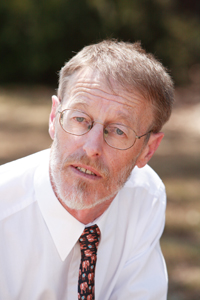 A senior Charles Sturt University (CSU) researcher, Professor Kevin Parton, has expressed disappointment with the delay to Australia’s carbon emissions trading scheme (ETS) until 2011 announced yesterday (Monday 4 May) by Prime Minister Kevin Rudd.
A senior Charles Sturt University (CSU) researcher, Professor Kevin Parton, has expressed disappointment with the delay to Australia’s carbon emissions trading scheme (ETS) until 2011 announced yesterday (Monday 4 May) by Prime Minister Kevin Rudd.The Federal Government had planned to introduce the scheme in 2010. The government also announced it would increase the upper limit of its carbon reduction target to 25 per cent of 2000 levels by 2020, depending on global agreements on emissions cuts being reached in Copenhagen later this year.
Professor Parton, a principal researcher with the University’s Institute for Land, Water and Society, said delaying the ETS start for 12 months until 1 July 2011 was disappointing but not surprising.
"We have already seen a dilution of the policy envisaged in the government’s Green Paper of July 2008 by expanding the number of firms eligible for free permits. This announcement provides another gain to business.
“Setting a fixed price for an unlimited supply of permits for the first year of the scheme seems like a prudent introduction, instead of moving directly to a free market and the major price changes that this could bring. However, the new price of $10 per tonne of carbon produced seems low relative to prices expected by some commentators and it would be yet another gain for business.
“As a means of gaining acceptance, the scheme has much to commend it. A fixed introductory price at the start will allow firms to simply concentrate on their quantity of greenhouse gas emissions, without having to estimate a price/quantity relationship. Then the experience of one year of operation of the scheme will allow firms to be more confident of the evolving price/quantity relationships, and be more able to effectively participate in an auction market for permits from the second year onwards.”
The Prime Minister has claimed that the slower start to the ETS will offer the opportunity to make a bigger contribution to reducing greenhouse gases later.
Although welcoming the government’s increase in Australia’s emissions reduction target for 2020, Professor Parton noted this would only be implemented if the Copenhagen summit agreed to stabilise the amount of carbon dioxide in the atmosphere at 450 parts per million by 2050.
“We need to get back to 450 ppm by 2050 to keep temperature rises due to climate change to two to three degrees celsius. Also the Prime Minister’s statement was conditional - Australia will commit only if other countries do. Nevertheless, the 25 per cent target does bring Australia closer to the commitment of some other countries.
“The author of the 2008 Green Paper, Professor Ross Garnaut, and others have said that the overall cost to the Australian economy of tackling climate change if we keep atmospheric carbon below 450ppm was a manageable - 0.1 to 0.2 per cent of annual economic growth to 2020.”
The new proposed scheme also includes Australian households, stating that 'Individuals and households will be able to calculate their energy use at home and pledge contributions to the $25 million plus Energy Efficiency Savings Fund to effectively offset their emissions. Individuals will be able to calculate their energy use and establish the savings they could achieve with a more energy efficient home. A household or individual could then make a tax deductible donation to the pledge fund, which the pledge fund would use to buy and cancel carbon pollution permits equivalent to that level of energy use.'





Social
Explore the world of social